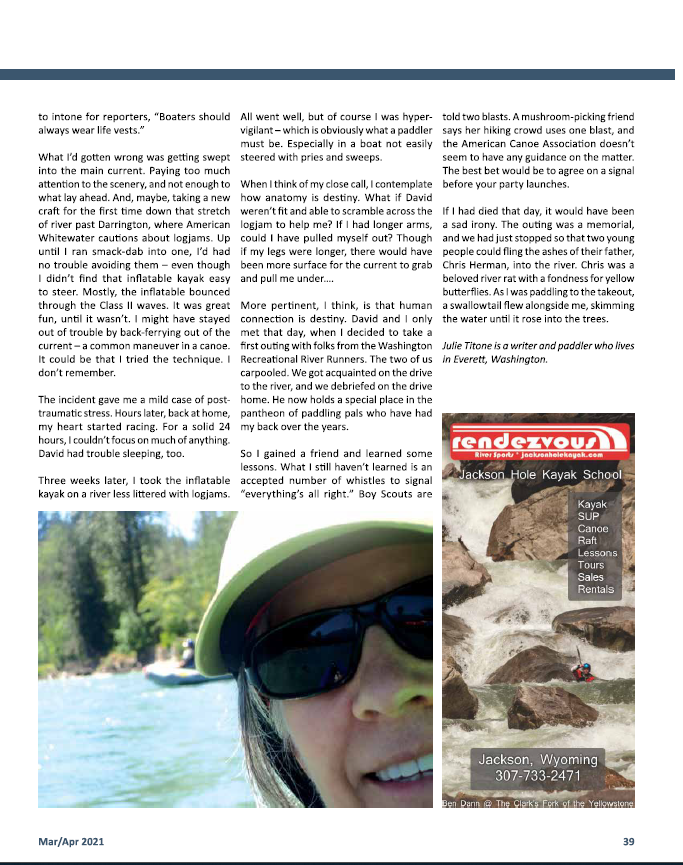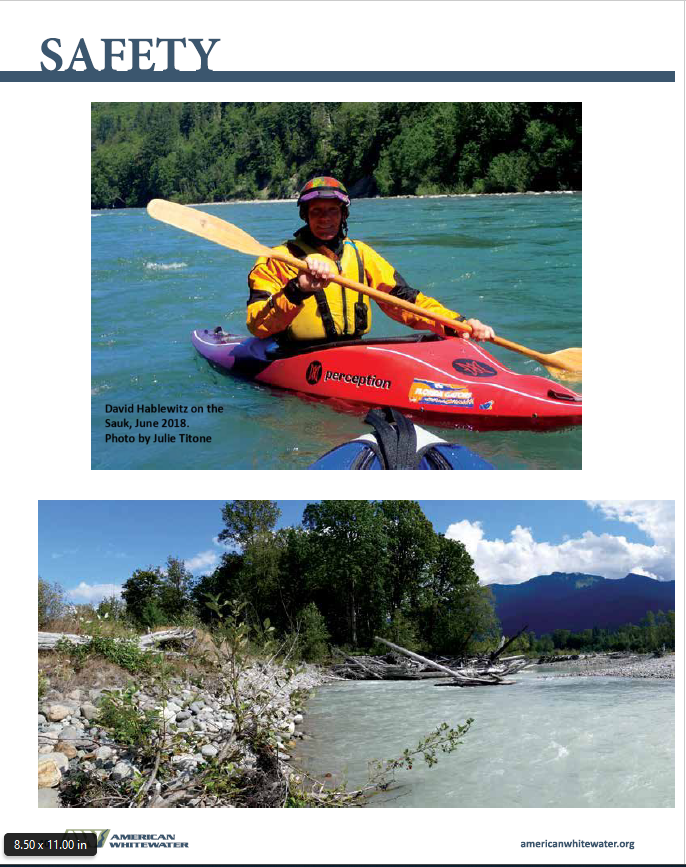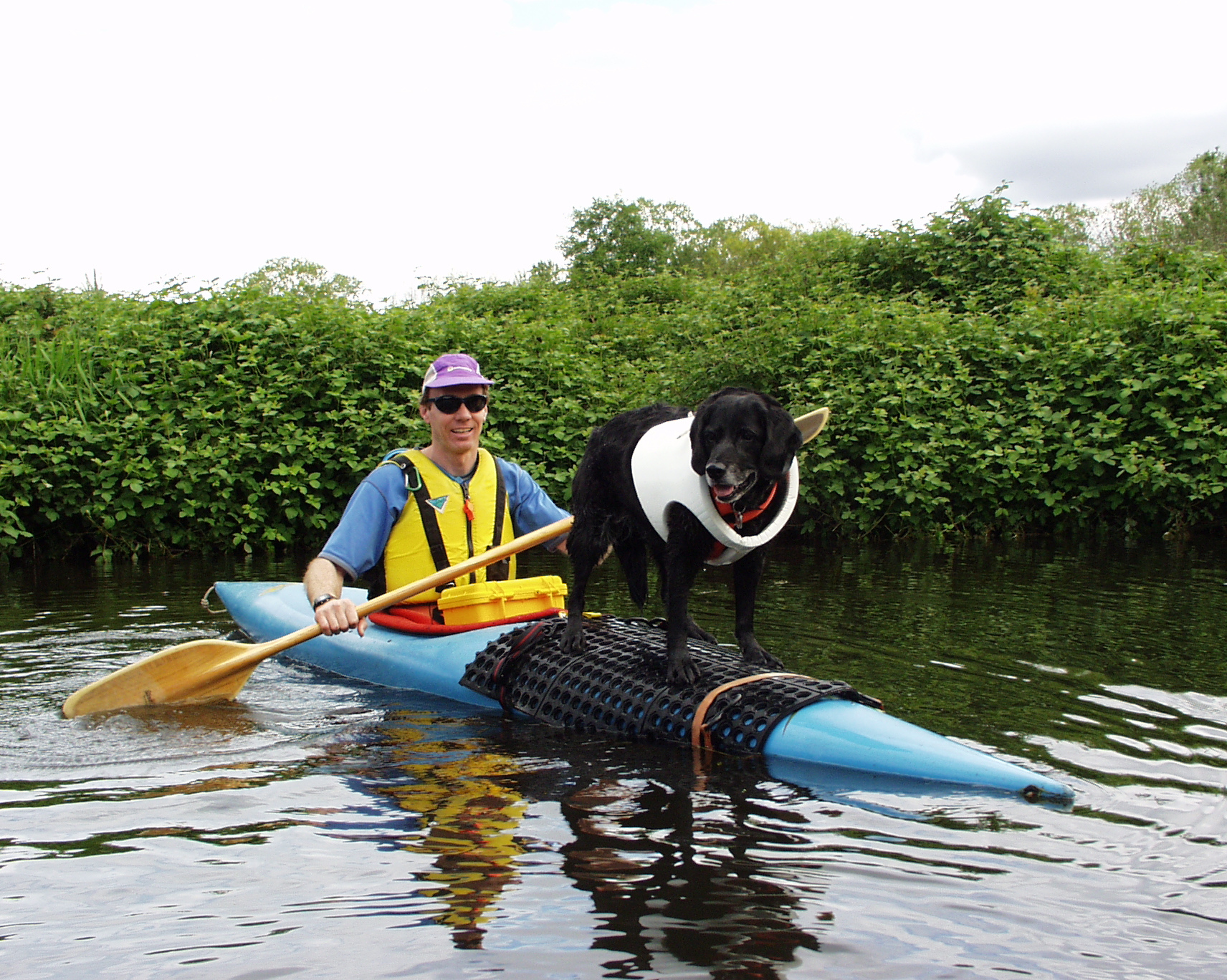Blog Archives
LogJam River Rescue. One Adventure. Two Stories.

Know the difference between an Outing and an Adventure?
An Outing is what it’s called when everything goes as planned.
An Adventure is what it’s called when things don’t go as planned.
Julie Titone and I shared a whitewater adventure. It took some time to digest the events, but here it is, published in companion articles in American Whitewater. I share it here on my blog with permission, but I encourage you to consider joining AW so you can have access to all the issues online and get new ones in print if you wish, as well as support their efforts to protect our free flowing rivers and our access to them. Seven full pages were dedicated to our adventure. The hope is that you will benefit from our experience. Share it and you may save a friend! Footnote to the story: My GPS tracker indicated it was under 2 minutes before I got there. Time flies!
(Julie’s post of the same article)







1200 people still in Grand Canyon National Park. And doing just fine.
To my government representatives at all levels:
There are currently over 1200 people in the Grand Canyon National Park, rafting the river right now.
In the heat of all that is going on with the Federal government shutdown, there is one thing that is happening that just makes no sense. I know there are many people severely impacted by this, but in one case actions are actually being taken that are using more resources than before the shutdown while severely hurting a group of people in a way that is irreversible. I am talking about access to the boat ramp for rafting groups scheduled to raft the Grand Canyon. 50 people a day are arriving at the boat ramp and being denied access.
This is not a simple matter of people going on a rafting trip vacation and this does not impact the closure of the park as is proven by the 1200 people that are currently on the river now and doing just fine.
The problem:
1. People who are being kept from the river that have pre-paid $2000 to the National Park Service for the access permit. This permit covers the costs of staff who meet them at the boat launch.
2. The park does not need to be open to give these groups access to the river. They only need access to the boat ramp many miles upstream of the Canyon.
3. The park service is currently employing 5-8 park rangers to blockade the road to the boat ramp 24 hours a day. Under normal operations, the park has only 2 people at the boat ramp for no more than a few hours each day to give a safety inspection of the boaters’ gear and a safety briefing before they launch. Working with the permit holders instead of against them would actually reduce the park’s costs. Allowing these people onto the river will have no impact on staffing requirements downstream. Emergency services are required at all times anyway and are exempt from the furlough. (hear the interview linked below)
4. These rafting trips are fully prepared to be completely self-sufficient for the 21 days they are in the canyon. There are currently over 1200 people already in the Grand Canyon, rafting the river. They are out of contact with the rest of the world, they have no way of even knowing what is happening and their presence has NO impact on whether the park is open or closed.
5. Launch dates are given by a lottery 2 years in advance. Some people have been trying to get a permit for over 10 years. For those fortunate enough to win a launch date, they then spend the next 2 years organizing and planning the trip. This includes getting a crew of 16 people together; making special arrangements to get 3-4 weeks off from work; planning travel to/from the Canyon from all parts of the country and even the world; spending $18,000 or more on gear rental and food preparation from one of the outfitters. Note that this is also costing the outfitters $20,000 – $100,000 per day that they can’t launch these groups and this money is unrecoverable. Their margins are very low and just a couple weeks of this could drive them out of business.
6. These groups scheduled to launch have no way of knowing if they will get onto the river on their scheduled date or not with the current situation. They have no choice but to make the trip to Arizona where they are finding out as they arrive that they are being denied.
7. If a launch date is missed, there is no way to give that group a new launch date. This is a necessary park service rule. The river corridor can only support a certain number of people at a time. Launch permits are booked solid every single day for the next 2 years. This is limited by the small number of places suitable for camping along the river. Also, the logistics of getting a group together are immense. For most people, they already have a very tight schedule. Airline tickets are non-refundable, arrangements for time away from work, etc. And the outfitters are booked to capacity many months in advance. It is very unlikely they could reschedule their trips even if that were an option.
Due to the great hurdles and logistics involved in rafting the Grand Canyon, this is truly a one-chance-in-a-lifetime experience for most people. Every day the park service blocks ligitimate access to the river, they are causing huge financial and emotional impacts unnecessarily on more than 50 people. Some of the people who have been turned away have been waiting for a permit since 1995.
Listen to this brief interview by NPR of a permit holder at the blockade.
Listen to this NPR interview with National Park Service Director Jon Jarvis.
Short Youtube video showing the scene at the roadblock by one of the rafters.
The solution:
1. End this government shutdown immediately. Best solution, but also highly unlikely.
2. Get special funding to pay to keep the park open. Governor Brewer of Arizona has been asked to have their state do this. Considering the revenue generated by the 3 million annual visitors to the park, this would seem like an easy decision, but she doesn’t appear close to doing this.
3. Allow the rafting trips access to Lees Ferry boat ramp as usual. Reduce the manpower needed at the boat ramp and allow these groups to proceed without adding any burden to the park.
Now some people may say that getting turned away from a vacation doesn’t compare to the other problems being caused by this shutdown, like Meals on Wheels or domestic violence centers. Everyone would agree there are more life-threatening issues at stake. But there is nothing preventing us from working on finding solutions to as many possible issues as we can at the same time. And this one is such an incredibly easy fix that actually saves money and resources, it doesn’t make sense not to do it.
Call to action:
1. Please contact National Park Service Director Jon Jarvis and present this idea to him.
National Park Service
1849 C Street NW
Washington, DC 20240
Phone (202) 208-3818
2. Please contact Grand Canyon National Park Superintendent Dave Uberuaga and urge him to do the same.
3. Please contact Arizona Governor Jan Brewer and encourage her to help at least fund the boat ramp operation if not the park.
http://www.azgovernor.gov/Contact.asp
Phone (602) 542-4331
4. Please work to get this leadership gridlock resolved.

4 Park Service vehicles and a handful of Park Rangers block Lees Ferry access 24 hours/day (photo by Tom Martin)
Wondering what these people are missing? Check out the journal of my trip.
Of Dogs and Whitewater Rafting
Recently I have noticed people bringing their dogs with them on the river when they go whitewater rafting. As a dog lover and a whitewater boater, I want to stir a discussion on the merits and risks of taking dogs whitewater rafting. I once had a great river dog that made many trips with me to the river. Jenny was a black lab who LOVED the water. We did many flat water trips where she would swim beside me for awhile and then climb onto the back of my kayak or sit in my lap and ride for awhile before jumping back in to swim some more.
But as a kayaker, there was no way of taking her down a whitewater river. For rafters, this is at least physically possible. I think most would agree that flat water is quite safe and class 5 whitewater is definitely out. The question then becomes: When does the risk outweigh the reward? Before you answer that, let me start by describing an event I experienced this weekend. I may have some details a bit off, but it’s close enough.
I was kayaking with a group from the WRRR club on the Sauk River.
The Sauk gauge reading was about 12,000 cubic feet per second (cfs) which I think equates to about 5000 cfs on that section. The Sauk is class 3-4 at that water level with plenty of rather large keeper holes (hydraulics).
The group consisted of 2 solo oar rafts, 2 rafts with several people, 4 solo catarafts, one inflatable kayak and one kayak (me). One of the solo rafters had his dog in the raft with him. Well, I guess technically that means he isn’t solo.
At one point the group was a bit spread out. The solo rafter with the dog dropped into a powerful hydraulic. Then one of his oarlocks broke. His dog got bounced out of the raft while the raft and oarsman stayed in the hole. The dog had on a life jacket and was swimming down stream. The current here was smooth and swift as it drained into the next rapid. The dog was about 20′ from the bank and there was little chance that the dog could reach shore before being washed into the next rapid which was a class 3 rapid several hundred yards long. Even if the dog could reach shore, it would have been hard to climb out of the river because the water level was high, the bank was steep and covered in overgrowth, and there was no slack water or eddy near shore. All of the other rafts were already running the next rapid and were out of sight or rescue range.
The raft finally washed out of the hole and was about 50′ upstream of the dog. At this point the oarsman moved the oar into the triangular support for the oarlock to give him some ability to use that oar. He had very little control of his boat as he continued to wash on down the river and into the next rapid.
Fortunately, the IK was close enough to help the dog. I saw it happen, but was too far away to help rescue the dog. The paddler in the IK was able to get to the dog and pull it from the 49 degree water and into his lap before washing on down into the rapid.
We were extremely lucky that it turned out so well. As it was, only 4 of the boats in the group would have even been able to rescue the dog and still control their boat in the next rapid. One of those just happened to be close enough to help. The water temperature was cold enough that such a long swim through the next rapid would have been life threatening by the temperature alone (Keep in mind this chart is based on an adult human. Heat loss is faster for a 40 Lb dog though fur helps.) Also, the rapid downstream was long with several large hydraulics that could have drown the dog, even with a life jacket on. At best, it would have been battered and bruised.
Dogs do not have any understanding of the dangers of whitewater, so owners should not think that the dog knows what to do if it finds itself swimming a rapid. Thinking “Oh, he’ll just swim to shore.” is a dangerous assumption. Even if the dog does swim to shore, is it going to the right one? Often, the closest shore is not the safest place to go. Once on shore, what will the dog do? In this case, there would have been no way to get back up to the dog. That side of the river was blocked by a rock wall along side the rapid. Hiking back upstream would have to be on the opposite side of the river which, as you can see from the video below, is over 100′ wide. Dogs do not understand the risks of a foot entrapment from standing up in swift water. Dogs cannot grab a rope and be pulled to shore. All rescue attempts are hands-on and require a person being put into the same risk as the dog.
So not only does having a dog on the river pose a risk to the dog, it introduces an inherent risk to the entire group. In this example, the person paddling the IK took a risk by rescuing the dog and running a rapid with it sitting in his lap. I took a risk by trying to get to the scene to offer help. The dog owner took greater risks trying rescue the dog while dealing with a broken oarlock. This time it turned out well, but there are plenty of other places or circumstances on this river where things could have been much worse. What if the oarsman had also been thrown from the raft? We would have given all our attention to him, not the dog. This swim happened in class 3 water. What if it happened in a class 4 rapid? What if it happened just upstream from a strainer log? What if it happened in the hydraulic upstream where one of our rafts got caught in a keeper hydraulic for 45 minutes? Yes, 45 minutes! Here is a brief video of that event.
We did not take any big risks to try to free this raft from the hydraulic. But what if the dog were in that raft? I assure you, the group would have taken much greater risks.
I have had my share of whitewater and flat water rescues. One of the things I was taught as a professional lifeguard was to always be asking “what if…?” and “what’s the worst thing that could happen?” then plan for it. Inevitably, you probably didn’t think of the worst thing that could happen, but it would at least help you prepare for what actually does happen so you don’t end up on the six o’clock news.
So I ask you: Do dogs belong on whitewater?




